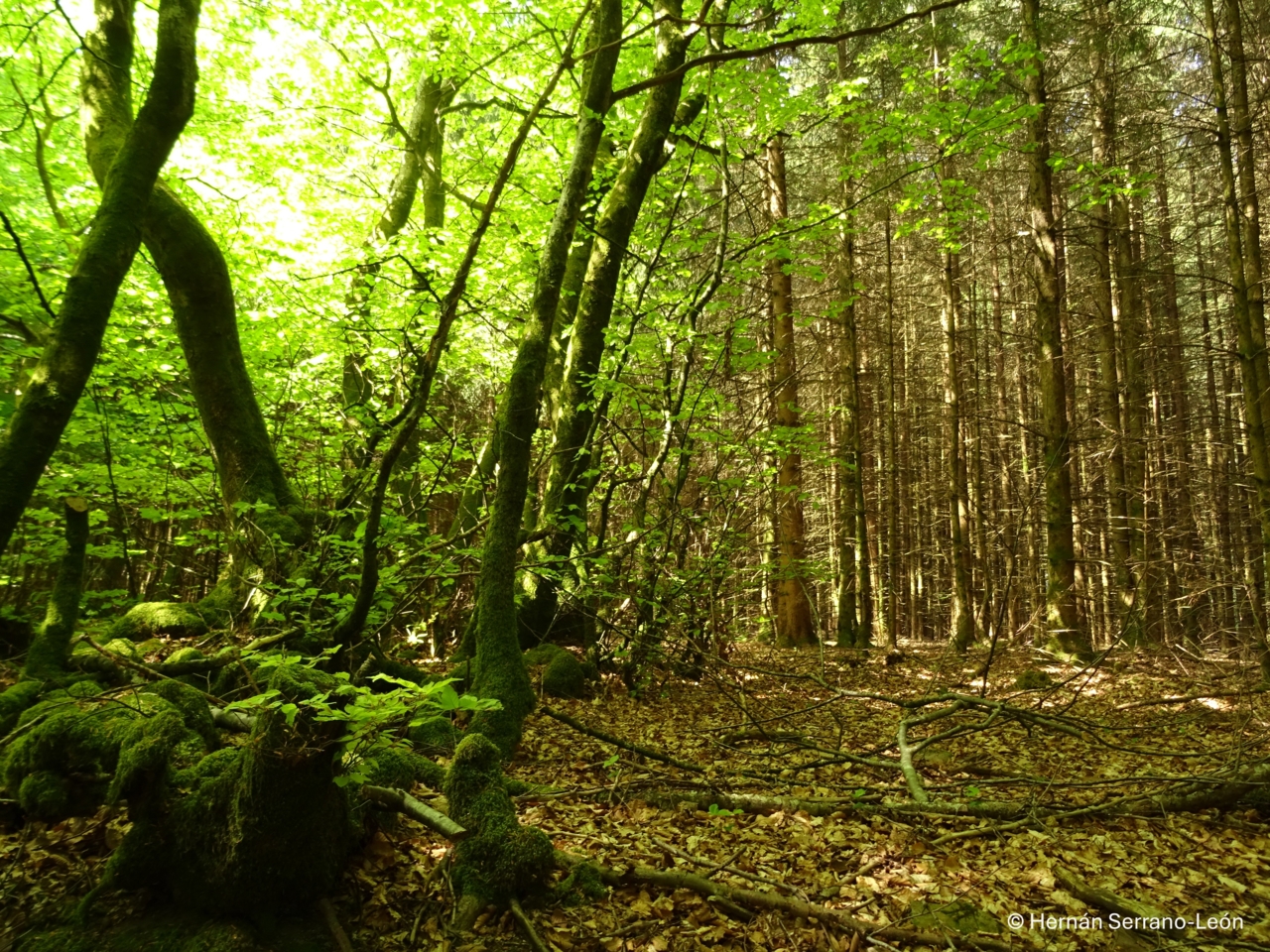Best Practice Knowledge Base
9. Restoration of Natural Processes and Ecosystem Preservation

Transition plantation-natural forest. Morvan, France ©Hernán Serrano-León
Ecosystem preservation focuses on protecting habitats to enable natural succession and processes like nutrient cycling, water flow regulation, and natural disturbance regimes, such as fire and flooding, to occur. By maintaining these processes, ecosystems remain diverse and functional, adapting to changes such as those caused by climate shifts.
9.1 Strict forests reserves
Preserving ecosystems and strictly protecting conservation areas play a crucial role in supporting forest restoration efforts. These measures safeguard biodiversity and ecosystem services and allow natural succession based on natural tree regeneration. By minimizing human disturbance, such as deforestation, logging, and land conversion, protected areas allow forests to recover organically, enhancing soil health, water retention, and carbon sequestration. The selection of strictly protected forest reserves (SPFRs) focuses on three key aspects: space, ensuring biodiversity through spatial completeness and connectivity; time, emphasizing habitat continuity and persistence; and function, evaluating naturalness, rarity, and representativeness. These criteria, integrated into a unified framework, ensure SPFRs effectively support biodiversity conservation.
9.2 Re-introduction of key species
Re-introducing key species, such as top predators, is a powerful tool for forest restoration as it helps reestablish natural ecological processes and balance. Top predators regulate prey populations, preventing over-grazing or over-browsing that can hinder vegetation recovery. This cascading effect, known as a trophic cascade, promotes biodiversity by creating conditions for the growth of diverse plant and animal species. Additionally, reintroducing keystone species can restore ecosystem functions like nutrient cycling and seed dispersal, further accelerating forest regeneration and resilience. This approach not only revitalizes forests but also enhances their long-term ecological stability.



